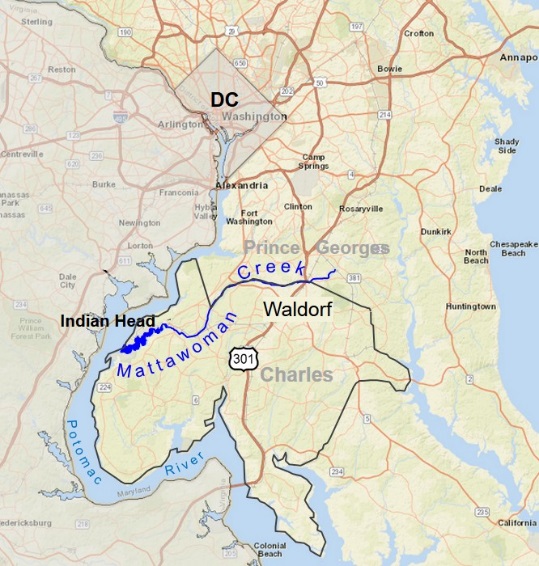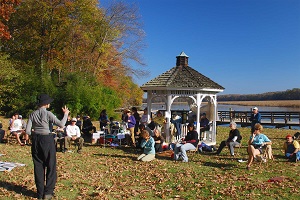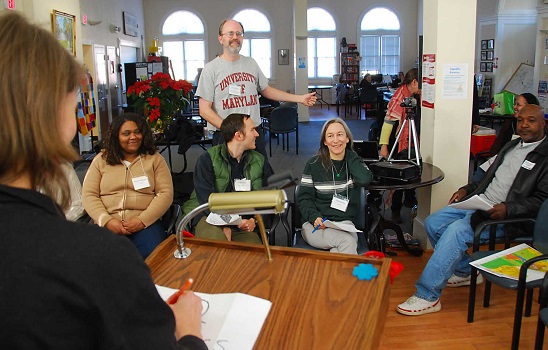Campaign to Save Mattawoman Creek
Only 20 miles south of Washington DC, Mattawoman Creek remains “what a restored Chesapeake Bay would look like” says an expert task force. This freshwater-tidal estuary, river, and watershed teem with life, making it the 8th ranked for biodiversity among Maryland’s 137 freshwater systems. Its forests are hotspots for birds, amphibians, and reptiles. It hosts an abundance of water-dependent birds and mammals, largemouth bass, migratory fish, and rich freshwater-tidal marshes. What’s more, most of the watershed is in Charles County, which itself has the 2nd greatest amount of “targeted ecological area” of all counties in Maryland.
Join our Campaign to protect the Mattawoman Creek from destructive development policies.
Current Threat: https://addup.sierraclub.org/campaigns/urgent-save-maryland-biodiversity-hotspot-from-airport-expansion
Please sign our petition to the Charles County Commissioners to protect residents by conserving the Mattawoman biodiversity hotspot. We want to keep environmental protections that prevent expansion of the local airport to protect the community and the creek. Please act today. Thank you for your support for this important cause.
Lily Fountain, Natural Places Chair, Sierra Club MD Chapter
INFORMATION
YouTube video of Sierra Club MD Program with Speakers Gabrielle Tayak, Dr. Richard Cook, Teresa Ball, James Lawson, Laurel Imlay, Ben Hance: https://youtu.be/cIH6zdp5Bqs
Video Interview with Dr. Richard Cook and Jim Lawson including lead threats from flights over schools: https://www.youtube.com/watch?v=ZSwWfL6wwjw
The Case for Protection of the Watershed Resources of Mattawoman Creek:
https://dnr.maryland.gov/fisheries/Documents/tredmanAlliance_Presentation.pdf
Proposed airport expansion endangers local community's health, welfare, and quality of life with threat to fish, wildlife, and bird habitat of local, state, and national renown:
https://www.bayjournal.com/news/fisheries/development-fight-erupts-over-protected-potomac-tributary/article_e183545c-c483-11eb-86aa-8b9185e739cd.html
Black children are disproportionately burdened by lead exposure nationwide. A majority of the 50 general aviation airports with the highest volume of lead emissions are located in communities of color:
https://grist.org/regulation/avgas-lead-epa-aviation-san-jose-reid-hillview/
Contacts: The Campaign to Save Mattawoman Creek is coordinated by Sierra Club Natural Places Committee contact Lily.Fountain@mdsierra.org, and the Southern Maryland Group.
Take Action: Environmentally friendly officials have been crucial to success in 25 years the Sierra Club has worked to Help us elect environmental heroes to protect Mattawoman Creek Watershed with a donation to the Sierra Club Maryland PAC with “WCD” in memo line.
Join us to see the Creek check the calendar for an upcoming trip!
More about the Creek and the Campaign to protect it

The Mattawoman has survived so far because forests in southern Prince George's and Charles Counties filter stormwater, keeping the river cool, clean, and alive.
Unfortunately, for decades Charles County has targeted much of the Mattawoman watershed for unchecked growth. The story begins with the perfect storm of a new sewage treatment plant and the Eastern Washington Bypass, a leg of the Outer Beltway. To exploit the proposed highways, land speculators ensured that Charles County’s 1990 comprehensive plan included a sewer-serviced “development district” bigger than Baltimore. In the plan was the new city of Chapman's Landing located on 2200 acres of forest stretching from the Potomac River to Mattawoman Creek. The Sierra Club successfully led the “Campaign to Preserve Chapman Forest,” which today is Chapman State Park, and Chapman and Mattawoman Wildlands.
As a result of the 1990 comprehensive plan, put in place when fisheries managers found that Mattawoman Creek was “near to ideal conditions,” the creek is now at the tipping point for irreversible decline because so much polluting pavement has replaced filtering forest. But just in time, a major victory occurred in July, 2016, when the elected Board of County Commissioners adopted a visionary comprehensive plan. The new plan, finally, responsibly directed growth and conserved natural areas.
Campaign Successes
Key to success is the Club’s sustained public outreach, voter education, and—unique among organizations fighting to save the Mattawoman—political involvement in elections. Two hot-button issues spanning two election cycles finally led to a majority of Charles County Commissioners who favored smarter growth solutions to the many problems facing the county. First, preceding the 2010 election, the sprawl-inducing and unpopular Cross County Connector became an important issue. (This highway was originally imagined to service Chapman’s Landing.) Second, in the 2014 election cycle, the comprehensive land-use plan became a hot-button.
The campaign, working with other state and local organizations, has achieved stunning successes in past. In 2017, a majority of Charles County Commissioners who had been endorsed by the Sierra Club, defended a visionary comprehensive land-use plan.
Over loud opposition led by the growth machine, the commissioners adopted the Watershed Conservation District (WCD). The WCD is a key element of the comprehensive plan and protects Mattawoman Creek by reining in a quarter century of sprawl development. Read about this major victory here
The Cross County Connector (CCC): To oppose the CCC, the Smarter Growth Alliance for Charles County was formed in 2008 with the Sierra Club as a charter member. This association of two dozen local, state and regional groups saw the potential for Charles County to demonstrate smarter land-use policies that would enhance economic opportunities, conserve enviable natural areas, and stop the slide in quality of life caused by overcrowded schools, jammed commuter routes, and polluted waterways.

The Sierra Club launched a strong grass roots campaign to educate citizens about the CCC with public forums, mailings, phone banks, and outings. Nearer the 2010 election, the Club publicized its candidate endorsements. For the first time ever, voters elected enough commissioners favoring smarter growth solutions to make a difference. One important result was a switch in the top transportation priority from the Western Waldorf Bypass to mass transit. The CCC was finally stopped when state and federal agencies denied wetland permits in 2011 and 2012, a result of the overwhelming adverse impacts that were analyzed and publicized by the opposition.
The Comprehensive Plan: The CCC was aimed at opening vast areas to development. The intense grass-roots effort to thwart it raised public awareness that land-use in general singularly affects the quality of life. By chance, the comprehensive land-use plan began a revision process in 2011 that included an admirable public outreach effort by Charles County.

Citizens poured into public meetings around the county advocating for natural resources. Alarmed developers formed a well-funded lobby to counter the movement. The ensuing battle was topic number-one in the 2014 election cycle.
Again, Sierra Club added candidate endorsements to the mix. A majority of three commissioners without ties to the development machine were elected, two of which were new. The historic independence of this majority led to the adoption in July 2016 of an equally historic and visionary comprehensive plan that moves away from sprawl development. In particular, the conservation of Mattawoman Creek receives priority, a major victory. Other major waterways ]benefit as well with lower zoning densities in their stream valleys. (And the path of the CCC is designated as a hiker biker trail!)
Sustained effort by thousands of citizens produced a remarkable new direction in land-use and conservation in one of the Maryland’s most biodiverse counties. To protect this major success, it is imperative to understand that implementation of the comprehensive plan will require continued public involvement, as it will surely be a contentious process to forge a comprehensive rezoning ordinance on the anvil of the plan. With perseverance, we can assure that Mattawoman Creek remains what the Algonquians called “where one goes pleasantly.” 
Learn More:
Mattawoman Creek issues and the comprehensive plan: www.mattawomanwatershed.org
Charles County land-use issues: www.savecharlescounty.com
Statewide biodiversity at a glance: Bionet Factsheet
Trouble Ahead Report: Road Map to a Smarter, Greener, and More Prosperous Charles County - and Alternate Vision 6-2009
Important Bird Areas in Maryland (include the Chapman, Mattawoman, Zekiah, and Nanjemoy IBAs in Charles, a preponderance of those in the inner coastal plain): http://md.audubon.org/ibas-maryland
Proposed Mallows Bay - Potomac National Marine Sanctuary
Mallows Bay Marine Sanctuary
Thank you to the hundreds and hundreds of Sierra Club members and supporters who commented to NOAA in support of Alternative D for the Proposed Mallow Bay-Potomac River National Marine Sanctuary in Maryland in March 2017! The comments in favor of this more inclusive sanctuary soared thanks to your response. By midnight at the comment deadline on March 30th, a total of 1,069 comments had been submitted!
We hope this proposal to have the first National Marine Sanctuary in almost 20 years and the first ever for the Chesapeake Bay will come to Maryland. We applaud the National Oceanic Atmospheric Administration for this wonderful opportunity recognize the tidal Potomac River and we entreat our federal and state elected officials to support NOAA and it's mission.
More ideas to save Mattawoman Creek
Click here for more ideas about how to preserve the Mattawoman Creek Watershed and the Chesapeake Bay.
References:
- Mattawoman Briefing Booklet 10-2009 (pdf)
- Trouble Ahead Report: Road Map to a Smarter, Greener, and More Prosperous Charles County - and Alternate Vision 6-2009 (pdf)
- Mattawoman Factsheet
Threats to the Mattawoman Creek
Global Warming Coastal wetlands are threatened by global warming. They are important buffers against storms and other global warming effects. We can do our part personally and regionally to reduce greenhouse gas emissions and preserve these wetlands.
Tips for Ecosystem Restoration and Preservation
- Reduce erosion, sedimentation, and pollution in the watershed. Leave forests and trees standing.
- Remove invasive species. (Join Southern Maryland Group stewardship outings in the Mattawoman Watershed!)
- Plant native plants and restore barren areas; see the Maryland Native Plant Society for more advice.
- Check out the Land Preservation Toolkit for more strategies to preserve open space.
Prevent Water Pollution
- Don’t dump! We live in the Chesapeake Bay watershed, so all the water that drains through our area eventually reaches the Bay -- after passing through our local watersheds. Materials dumped into open sewer drains will flow directly into our important and irreplaceable waterways.
- Prevent, identify, and quickly clean up spills of sewage, chemicals, and toxic substances. Report spills to the Maryland Department of Environment (MDE) at 866-633-4686.
Stop Sprawl Development
Development in the outer suburbs increases traffic and carbon dioxide emissions and paves over our remaining wild places. New roads and sprawl also reduce our quality of life by degrading public facilities and services such as schools and fire and police response.
- See the Sprawl and Global Warming Factsheet.pdf
- Take public transportation, set up a carpool, bike when you can...and work for public officials who care about the environment and will advocate for good environmental laws.
- July 2007 Chesapeake article on the Mattawoman Watershed, the Bay, and Global Warming
- Charles County and its towns could sign onto the U.S. Mayor's Climate Protection Agreement, pledging to reduce global warming gas emissions.
- Use Green Development techniques, such as green buildings, native plants, green roofs, rain gardens, rural clustering, and stormwater management to benefit the Mattawoman and other Maryland watersheds.
Get Outdoors to see the Creek
Learn about trips around the Mattawoman watershed, and check out pictures from Mattawoman trips.
https://dnr.maryland.gov/wildlife/pages/naturalareas/southern/mattawoman-creek.aspx
https://www.traillink.com/trail/indian-head-rail-trail/
https://birdersguidemddc.org/site/mattawoman-natural-environmental-area/
https://www.gameandfishmag.com/editorial/fishing_bass-fishing_va_0508_01/192844
https://www.bassmaster.com/attend-bassmaster-elite-potomac-river-presented-econo-lodge
https://www.townofindianhead.org/index.asp?SEC=EE724F8C-FAE2-4055-99F3-01DBCD4EC671&Type=B_BASIC
Walk at Chapman Forest - take a leisurely walk to the Mt Aventine mansion for a beautiful view of the Potomac river! Chapman Forest protects the Mattawoman Creek Watershed
https://www.friendsofchapmansp.org/index.php/about-chapman-state-park
https://www.sierraclub.org/maryland/blog/2019/08/marylands-old-growth-forests
Mallows Bay and the National Marine Sanctuary benefits from a healthy Mattawoman Creek Watershed
https://sanctuaries.noaa.gov/mallows-potomac/visit/
https://www.charlescountyparks.com/parks/mallows-bay-national-marine-sanctuary
Nanjemoy
https://dnr.maryland.gov/wildlife/Pages/publiclands/southern/nanjemoy.aspx
History
https://www.cbf.org/about-cbf/locations/maryland/issues/charles-county-comprehensive-plan.html
https://www.audubon.org/important-bird-areas/mattawoman-creek
https://www.baltimoresun.com/maryland/carroll/sports/ph-cc-sp-lonny-weaver-0817-20140815-column.html
https://www.cleanwateraction.org/2017/05/12/watershed-conservation-district-mattawoman-creek
https://www.sierraclub.org/maryland/mattawoman